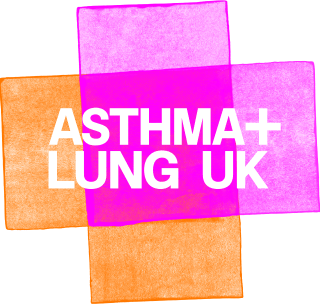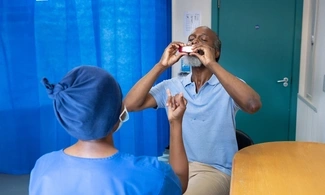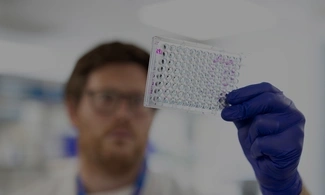What are pseudomonas?
Pseudomonas are a group of bacteria that can cause a range of infections, including lung infections. It mainly affects people who have a lung condition or a weak immune system.
Pseudomonas bacteria can be found in water, plants, soil and other moist environments. They can live on surfaces for a few days and have been found in damp areas of hospitals like taps, showers and towels.
Many hospitals do not allow flowers on wards or other clinical areas because pseudomonas and other bacteria can grow in vase water.
Pseudomonas aeruginosa
How do you say pseudomonas aeruginosa?
Pseudomonas: Suu – doh – moan – as
Aeruginosa: Ay-roo-gin-oh-sah
Pseudomonas aeruginosa are the most common type of pseudomonas bacteria that can cause infections in people.
The World Health Organisation (WHO) lists pseudomonas aeruginosa as a public health priority.
This is because it’s a type of bacteria that:
- can cause serious infections
- can spread quickly between people, mostly in hospital and healthcare settings
- is hard to treat because some antibiotics do not work – this is called antibiotic resistance.
Who is at risk of a pseudomonas infection?
You have a high risk of infection if you have a weakened immune system. For example, people living with cancer or diabetes, as well as newborns and older people.
You’re also at a higher risk if you have a lung condition, such as:
These lung conditions can cause inflammation in your airways and make it harder to clear mucus. Pseudomonas can grow in this mucus and increase your risk of infection.
Clearing your chest can help to reduce your risk of infection. You could try the active cycle of breathing technique.
What infections do pseudomonas cause?
Pseudomonas can affect all parts of the body and cause:
- chest infections – an infection of your lungs or airways
- pneumonia – a type of chest infection which causes inflammation in your lungs
- ear, eye, skin and urinary tract infections
- bone, joint or muscle infections
- sepsis (blood poisoning)
- endocarditis – a rare infection in the heart.
Symptoms of a pseudomonas infection in your lungs or airways
You can have pseudomonas in your lungs without any symptoms. But pseudomonas infections can be serious and often need treatment.
Symptoms can vary depending on where in your body you have a pseudomonas infection.
Chest infections are common if you have pseudomonas in your lungs or airways.
Common symptoms are:
- a cough
- a high temperature (38C or above)
- shortness of breath
- wheezing.
How are pseudomonas infections diagnosed?
Your doctor may test for pseudomonas if you have:
- a lung condition
- regular chest infections, or
- a chest infection that does not go away after treatment.
There are a few ways to test for pseudomonas in your lungs:
| Test | What happens during the test? | Why do I need this test? |
| Mucus sample - this is sometimes called a sputum sample |
You’ll cough and clear your throat to collect mucus in your mouth. You then spit this mucus sample into a pot. Some people may be given a salty solution to breathe. This helps loosen the mucus so you can cough it up. This is called an induced sputum sample. |
To see if you have pseudomonas in your lungs. |
| Bronchoscopy | A thin, flexible tube with a camera is put through your nose or mouth, down your windpipe and into your lungs. | You cannot collect a mucus sample, or the results of your mucus sample were not clear. |
How are pseudomonas infections treated?
It’s easier to clear and control a pseudomonas infection if your doctor detects it early.
Your doctor may prescribe antibiotic tablets to clear pseudomonas from your airways, including ciprofloxacin and levofloxacin.
Some antibiotics cannot clear pseudomonas infections from the lungs
Pseudomonas aeruginosa can become resistant to antibiotics and cause infections that last a long time. This means the antibiotics cannot clear the pseudomonas bacteria from your lungs and you may need to try more than one type of antibiotic to control the infection.
More research is needed to find new antibiotics and treatments for pseudomonas infections.
Some people with a pseudomonas lung infection may be prescribed other treatments. These include:
- inhaled antibiotics – you can take this medicine using an inhaler or nebuliser
- antibiotics given through an injection in your arm.
If your symptoms are still not improving, speak to your doctor for advice.
Long term pseudomonas infections
Some pseudomonas infections do not go away after treatment, or they keep coming back.
If this happens, you may need to take antibiotics for three months or more to reduce symptoms.
You should have regular reviews with a specialist to track your symptoms and manage your condition. They'll also take mucus samples to check the level of infection in your body.
How do you prevent a pseudomonas infection?
Pseudomonas can spread by touching hands, surfaces or items that have not been cleaned.
To reduce your risk of infection:
- wash your hands often with soap and water
- cough into a tissue
- clean anything you use, or surfaces you touch, with an antibacterial cleaner
- wash your clothes, towels and sheets separately at the highest possible temperature
- try to use a clean towel every day
- try to stop smoking – this can help your immune system
- avoid close contact with anyone who has a pseudomonas infection.
How do you prevent pseudomonas infections when you have a lung condition?
Keeping your airways clear makes it harder for pseudomonas to live and grow.
If you have a lung condition, your doctor or nurse can refer you to a respiratory physiotherapist. They can show you the best breathing exercises to help:
- remove mucus (phlegm) from your lungs
- manage your symptoms, like coughing
- reduce chest infections.
The physiotherapy might also suggest using an airway clearance devices. These are items that help loosen the mucus from your lungs.

Get support
Call our helpline for support with your condition. Get advice on your medicines, symptoms or travelling with a lung condition, or just call us to say hello.








